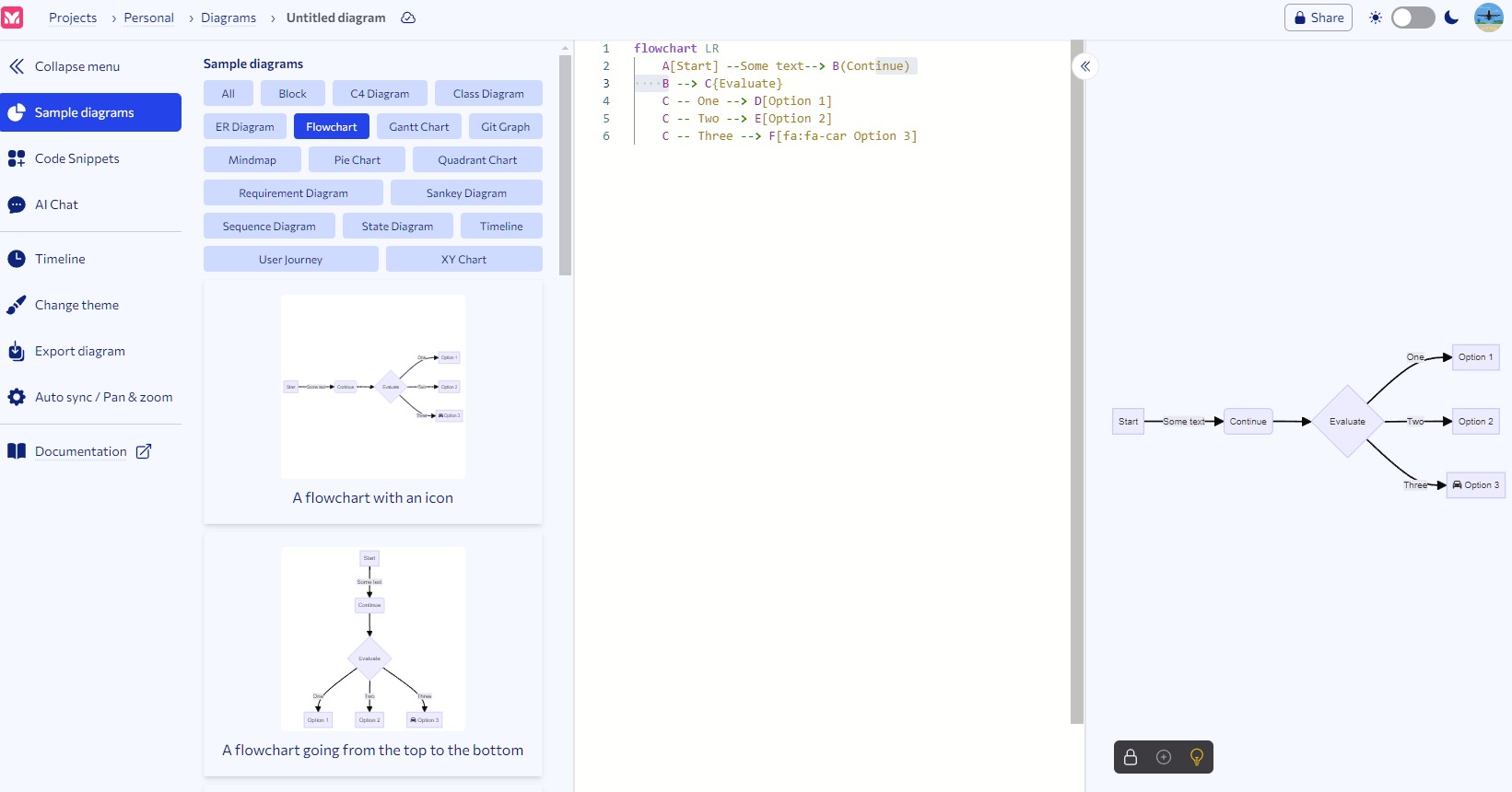Mermaid, the open source diagramming and charting tool, has long been popular with developers for its ability to create diagrams using a Markdown-like language. As is often the case, Mermaid founder Knut Sveidqvist created the project because he saw a need for it in his own job as a software architect and then open sourced it without any immediate plans for monetization. Then, in 2022, he was approached by Open Core Ventures (OCV), the venture capital firm of GitLab founder Sid Sijbrandij, which later paired him with serial entrepreneur and investor Andrew Firestone as his CEO.
Now the company, which builds hosted services around the open source project, announced that it has raised a $7.5 million seed funding round from OCV, Sequoia and Microsoft’s M12 fund (among about a dozen more angel investors).
There’s some irony in Microsoft investing in Mermaid now. Sveidqvist tells me that the initial impetus for creating Mermaid was a lost Microsoft Visio file. “I had to redraw everything. So on the way home, I thought there had to be a better way of doing this. It was also the time when markdown was starting to kick in. Can’t we have this as text? That was the idea. Later that night, I sat down in the living room with my kids. They were watching TV and I started the project. They were watching ‘The Little Mermaid.’ That’s why I named that eight years ago.”
Early on, Mermaid was mostly about flowcharts, but over time Sveidqvist added other diagram types — and the community quickly made it its own, too. And it’s gotten quite popular. Firestone told me that the cloud version of the open source project had 4 million users last year.

The OCV system is to look for popular projects with smart founders and co-found a company with them to commercialize those projects. Often, that means bringing in a CEO with business experience to complement what is typically a technical co-founder. What also helps, of course, is that these projects already have a track record, which in turn de-risks the investment quite a bit.
“Matching the open source software with the venture studio model, with Sid Sijbrandij’s kind of background, with the capital — when you stack those things together, you now you have these seed-stage companies that look like they might have been de-risked much as a series A. You get so much of a view into the future on product-market fit, which was really special for me coming in,” Firestone explained.
Firestone added that millions of non-technical users need diagramming and flowchart tools. That’s a market Mermaid Chart is looking to address by building easier-to-use tools for this group of users. But the overall vision is significantly larger and isn’t so much about disrupting the likes of Lucidchart or Miro. Mermaid Chart wants to go after ServiceNow and similar workflow automation services, Firestone told me. But that’s still quite a ways off.
For now, the team is squarely focused on building out its service and reaching a broader audience. Once a company goes all-in on Mermaid Chart, though, the tool has the potential to become a vital knowledge base, which can then lay the groundwork to enable the company’s broader process automation vision.
As a text-based tool, there will always be a relatively high barrier to entry, something the team is quite aware of. That’s why the company recently added a visual editor as well. That’s an opt-in feature, though. Users who want and like the text-based approach can continue to do so (and switch between the two interfaces at will).
In addition, to make Mermaid even more accessible, the team also trained its own AI model to allow users to create charts with the help of a chat interface, for example. For paying users, the AI can also fix a diagram when you botch the syntax.
“Mermaid’s open-core is enjoyed by millions of software engineers globally, and its software is supported natively in GitLab, GitHub, and others,” said Sijbrandij, co-founder and CEO of GitLab and founder of Open Core Ventures. “Mermaid Chart is expanding the community by bringing the benefits of Mermaid to all types of business users, leveraging AI as a catalyst. The use cases and business opportunities adjacent to the technology are significant and we’re excited to support the team in this next phase of growth.”
Correction: Between my first conversation with Mermaid Charts and today, the team raised more funding and added investors. We’ve updated the story to reflect that.































Comment